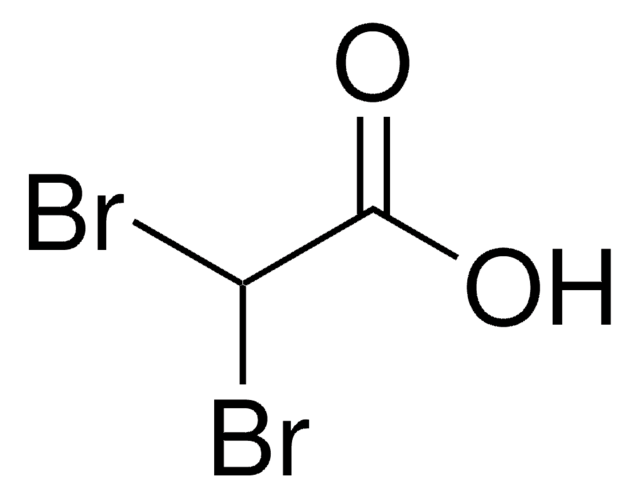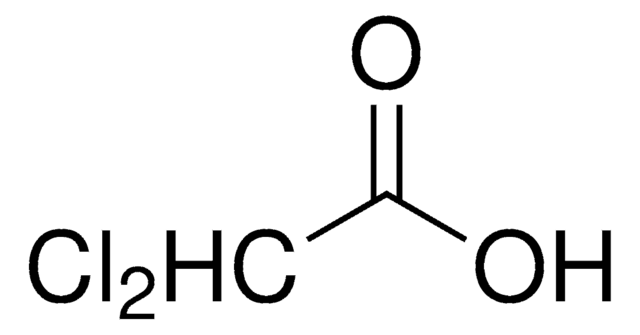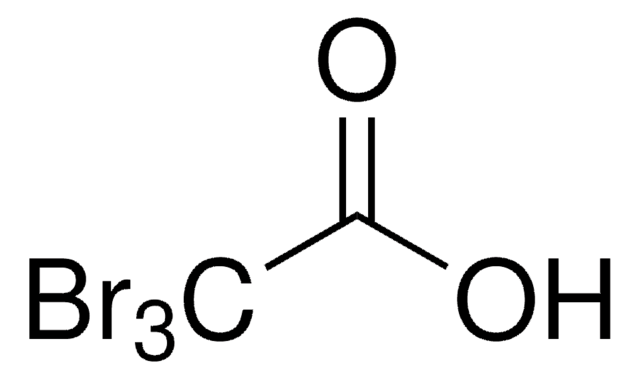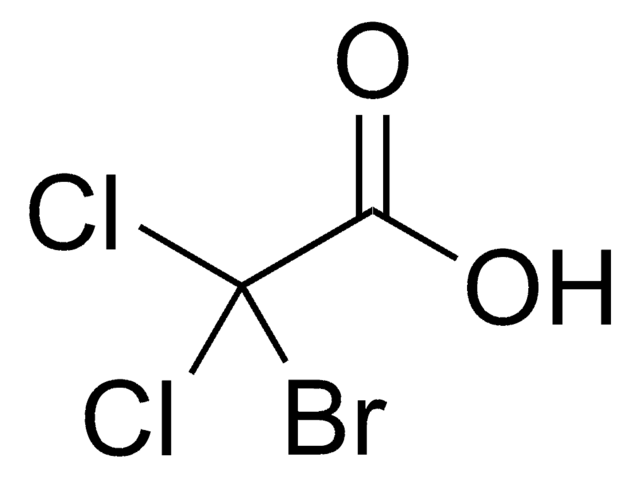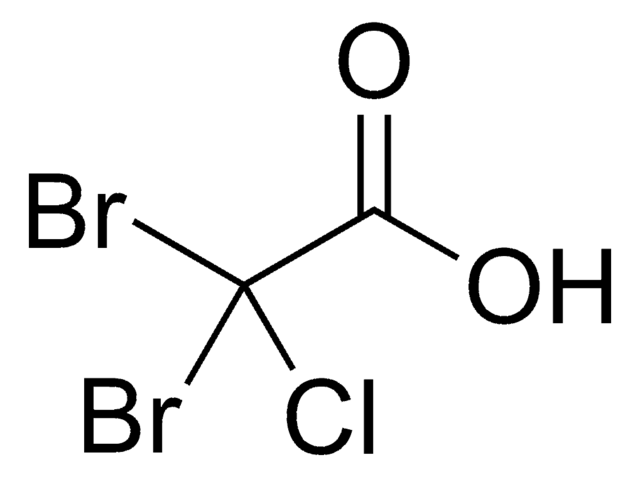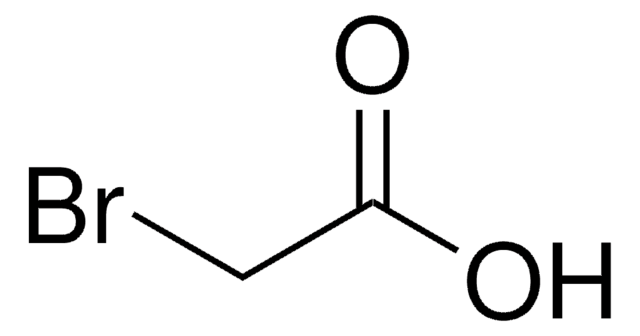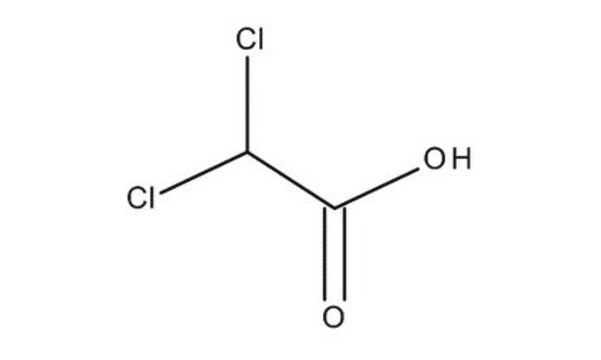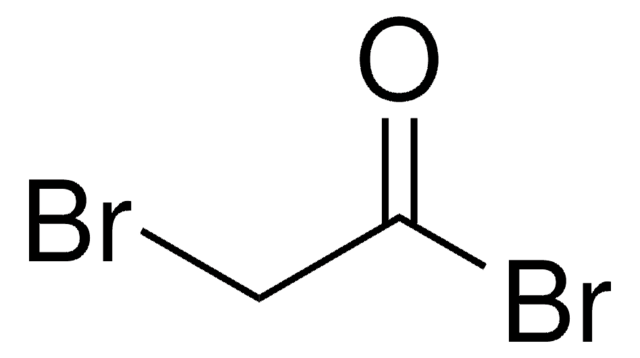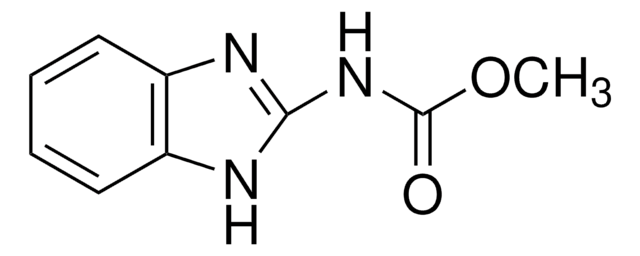242357
Dibromoacetic acid
97%
Sinonimo/i:
2,2-Dibromoacetic acid, DBAA
About This Item
Prodotti consigliati
Livello qualitativo
Saggio
97%
Stato
solid
P. ebollizione
128-130 °C/16 mmHg (lit.)
Punto di fusione
32-38 °C (lit.)
Densità
2.382 g/mL at 25 °C (lit.)
Gruppo funzionale
bromo
carboxylic acid
Stringa SMILE
OC(=O)C(Br)Br
InChI
1S/C2H2Br2O2/c3-1(4)2(5)6/h1H,(H,5,6)
SIEILFNCEFEENQ-UHFFFAOYSA-N
Cerchi prodotti simili? Visita Guida al confronto tra prodotti
Categorie correlate
Applicazioni
- Forthe stereoselective synthesis of (E)-α, β-unsaturated carboxylic acidsby samarium diiodide (SmI2) catalyzed reaction with aldehydes.
- Tosynthesize sodium bis(2-pyridylthio)acetate ligand by reacting with 2-mercaptopyridinein the presence of NaOH.
Altre note
Avvertenze
Danger
Indicazioni di pericolo
Classi di pericolo
Acute Tox. 4 Dermal - Acute Tox. 4 Inhalation - Acute Tox. 4 Oral - Aquatic Chronic 3 - Eye Dam. 1 - Skin Corr. 1B
Codice della classe di stoccaggio
8A - Combustible corrosive hazardous materials
Classe di pericolosità dell'acqua (WGK)
WGK 3
Punto d’infiammabilità (°F)
235.4 °F - closed cup
Punto d’infiammabilità (°C)
113 °C - closed cup
Dispositivi di protezione individuale
Eyeshields, Faceshields, Gloves, type P3 (EN 143) respirator cartridges
Scegli una delle versioni più recenti:
Possiedi già questo prodotto?
I documenti relativi ai prodotti acquistati recentemente sono disponibili nell’Archivio dei documenti.
I clienti hanno visto anche
Il team dei nostri ricercatori vanta grande esperienza in tutte le aree della ricerca quali Life Science, scienza dei materiali, sintesi chimica, cromatografia, discipline analitiche, ecc..
Contatta l'Assistenza Tecnica.